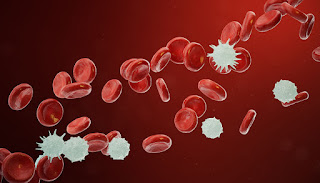12 Brest Cancer Myth versus Fact Part ~ 2
6 More fact and myth about breast cancer
Myth: Yearly mammograms ensure that bosom disease will be discovered early.
Reality: Despite the fact that mammography is the best early-identification instrument we have, it doesn't generally discover bosom malignant growth at the beginning phase.
It's positively ordinary to inhale a murmur of alleviation whenever your mammogram confesses all. Most ladies believe, "I'm useful for one more year" and reset their heads.
In spite of the fact that mammography is a generally excellent screening instrument, it isn't secure. It can restore a bogus negative outcome, implying that the pictures look typical despite the fact that malignant growth is available. It's evaluated that mammograms miss about 20% of bosom malignant growths at the hour of screening.4 Bogus negative outcomes will in general be progressively normal in ladies who have thick bosom tissue, which is comprised of more glandular and connective tissue than greasy tissue. More youthful ladies are bound to have thick bosoms.
The truth of bogus negatives clarifies why a lady can have a typical mammogram result and afterward get determined to have bosom malignant growth a couple of months after the fact. A few ladies can have a progression of ordinary mammograms and still be determined to have propelled bosom malignancy. Likewise, there are situations where bosom malignant growth creates and develops rapidly in the year or so after a genuine negative mammogram.
Mammography gets most bosom diseases, however, and that is the reason customary screenings are fundamental. But at the same time it's essential to focus on any adjustments in your bosoms, perform month to month bosom self-tests, and have a physical assessment of your bosoms by wellbeing proficient consistently.
Network part Rah2464 shares her experience: "I think it is genuinely critical to instruct everybody that it takes imaging, self-test, and maybe mindfulness of indications to come down with this infection as right on time as could be expected under the circumstances. I actually indiscriminately felt that as long as I went to my yearly mammogram arrangements followed by counsel and test with my PCP, that I was fine. Imaging ended up bombing me, yet my instinct about myself and how I felt helped me get analyzed. On the off chance that I had depended just on a mammogram/ultrasound, I figure I would have had a very different guess."
Bgirl shares that she has had bosom malignancy twice, yet imaging just got it once: "Mammograms are an incredible screening instrument and discovered my first bosom disease at 46. The subsequent one, not really. There was no bumps either time: the first was profound and the second was behind an areola. With the subsequent one, I found a lymph hub that was developing."
Simone had a bump that prompted further testing, despite the fact that her mammogram was clear: "Mammograms don't discover everything. The day of my ultrasound/center biopsies my 3D mammogram was totally clear."
Myth: Bosom malignant growth consistently causes an irregularity you can feel.
Reality: Bosom malignant growth probably won't cause a protuberance, particularly when it initially creates.
According to Dr. Manish Sharma Best breast cancer specialist in Delhi. Individuals are here and there under the feeling that bosom malignant growth consistently causes a bump that can be felt during a self-test. They may utilize this as motivation to skip mammograms, thinking they'll have the option to feel any change that may show an issue. Be that as it may, bosom malignant growth doesn't generally cause a protuberance. When it does, the malignant growth may have just moved past the bosom into the lymph hubs. In spite of the fact that performing bosom self-tests is absolutely a smart thought, is anything but a substitute for normal screening with mammography.
There are some different fantasies about what sorts of bosom knots are less troubling, for example, "If the bump is difficult, it isn't bosom malignancy," and "On the off chance that you can feel an irregularity that is smooth, and additionally that moves around unreservedly under the skin, it's not a bosom disease." Any protuberance or unordinary mass that can be felt through the skin should be looked at by a medicinal services proficient. Albeit most bumps are generous (not malignancy), there is consistently the chance of bosom disease.
People group part Simone RC says, "[There is a myth] that you possibly need to stress if your knot is hard, not versatile, and not smooth. Each and every specialist who felt my consistently knotty bosoms said they could never have imagined what I felt was dubious. I saw the new knot on one of my best old bumps. Smooth, versatile, delicate, similar to a grape cut down the middle the long way. Thank heavens my gynecologist paid attention to me in spite of having my yearly 3D mammogram totally clear a couple of months prior."
Myth: Beginning phase bosom malignant growth seldom repeats.
Reality: Even with beginning phase bosom malignant growth, there is in every case some hazard the disease will return.
Numerous individuals accept that beginning phase bosom malignancy — a disease that hasn't moved past the bosom and underarm lymph hubs — has basically no possibility of repeating, or returning. Albeit a great many people with beginning phase bosom malignant growth won't have a repeat, the hazard never disappears totally.
Another legend: If the bosom malignant growth doesn't return inside 5 years, it will never return. While the facts confirm that the danger of repeat is most prominent in the initial 2 to 5 years after the fact repeats can occur. On account of these legends, a few ladies with beginning phase bosom malignancy report feeling totally bushwhacked when they have a repeat. Indeed, even at 20 years after determination, individuals with stage I, okay hormone-receptor-positive bosom malignant growth have a 15–20% possibility of recurrence.5
Intermittent bosom malignant growth can be a neighborhood or local, which means it returns the bosom or chest region where the first disease was found, or far off, which means it returns another piece of the body, for example, the bone, liver, or lungs. Far off repeat is likewise called metastatic or stage IV bosom malignancy.
In case you're determined to have beginning phase bosom malignant growth, your treatment group can assist you with understanding your danger of repeat. Various variables can impact hazard, for example,
*The size of the first tumor
*The number of lymph hubs included
*The evaluation of the cells (how strange they were in appearance)
regardless of whether the disease tried positive for hormone receptors as well as additional duplicates of the HER2 quality
Dr. Manish Sharma best oncologist in Delhi says the particulars of your treatment plan
In the event that you had a genomic test, for example, Oncotype DX, which breaks down a gathering of qualities to anticipate the danger of repeat, that data additionally can be useful.
Myth: All bosom malignant growth is dealt with basically a similar way.
Reality: Treatment plans differ broadly relying upon the qualities of the malignancy and patient inclinations.
"I had no clue until I was analyzed what number of sorts of bosom malignancy there are, nor did I know anything about the various kinds of treatment," notes Network part Oceanbum.
Hers is a typical encounter: In the event that you've never had bosom malignant growth or haven't been near somebody who does, there's no genuine motivation to become familiar with the intricate details of treatment. Numerous individuals have some ambiguous thought that bosom malignancy requires a blend of medical procedure, radiation treatment, and possibly chemotherapy, however, they don't know much past that. They probably won't understand that they can address five distinct individuals with bosom malignancy and find that they have five diverse treatment plans.
This is on the grounds that every individual's treatment plan truly is custom-fitted to their necessities. Such a significant number of various components can become possibly the most important factor while picking medicines, for example,
the size, stage, and grade of the malignancy, just as the area (channels versus lobules)
regardless of whether the malignancy is known or accepted to be connected to an acquired hereditary transformation, for example, BRCA1 or BRCA2
regardless of whether the malignant growth tests positive for estrogen or progesterone receptors (which means its development is energized by hormones)
regardless of whether the malignant growth tests positive for additional duplicates of the HER2 quality
consequences of tests that can anticipate the probability of repeat, for example, Oncotype DX or MammaPrint
persistent inclinations about maintaining a strategic distance from explicit symptoms or the planning of treatment meetings
To get familiar with why treatment plans differ so generally, look at our pages about Arranging Your Treatment.
Myth: Bosom malignant growth just happens to moderately aged and more seasoned ladies.
Reality: More youthful ladies can and do get bosom malignant growth, as do men.
The facts confirm that being female and becoming more established are the primary hazard factors for creating bosom disease. In 2017, about 4% of intrusive bosom tumors were analyzed in ladies under age 40, while about 23% were analyzed in ladies in their 50s and 27% in ladies ages 60 to 69.6 While 4% may sound little, it isn't zero: This rate implies that one in each 25 obtrusive bosom malignant growth cases happened in ladies under 40.
Ladies of any age need to focus on their bosoms, perform self-tests, and report any bizarre changes to their PCPs — and demand that bosom malignant growth be precluded if there's a concerning manifestation. Indeed, even a few specialists get tied up with the fantasy that ladies in their 20s and 30s don't get bosom malignant growth. Ladies with a solid family ancestry of bosom malignant growth, particularly diseases analyzed in family members before age 40, may wish to begin screenings sooner.
Bosom malignant growth is significantly rarer in men, yet it occurs. Individuals regularly feel that men can't get bosom disease since they don't have bosoms — however, they do have bosom tissue. Male bosom malignant growth represents under 1% of all bosom diseases analyzed in the U.S. In 2019, around 2,670 men are relied upon to be determined to have the disease.7 Despite the fact that male bosom malignant growth is uncommon, it will, in general, be analyzed at a further developed stage since bosom changes and knots ordinarily don't lead men and their primary care physicians to think "bosom disease." Changes in male bosoms should be looked at, as well. Breast cancer specialist in Delhi.
Myth: When treatment is finished, you're done with bosom disease.
Reality: Bosom disease can have a drawn-out effect on individuals' lives and prosperity.
Individuals with bosom malignancy frequently report that their loved ones anticipate that they should be prepared to proceed onward after medicines, for example, medical procedure, radiation treatment, and chemotherapy ends. In all actuality, directed treatments, for example, Herceptin (synthetic name: trastuzumab) might be endorsed for a year or more. Hormonal treatments, for example, tamoxifen and aromatase inhibitors, are frequently endorsed for as long as 10 years. In the event that a lady has chosen to have her bosoms reproduced, this may require a progression of medical procedures for more than a while. Also, for those with metastatic or stage IV bosom malignant growth, treatment will keep going for the remainder of their lives.
Considerably after fundamental medicines are done, individuals can encounter long haul reactions. A portion of these reactions can be physical: torment and snugness, exhaustion, skin changes, neuropathy (shivering and deadness in the hands and feet), menopausal side effects, and others, contingent upon the treatment routine. Opposite symptoms can be mental and passionate: uneasiness, the dread of repeat, and relationship changes, among others. For some individuals, the impacts of the bosom malignant growth experience keep going for quite a long time — or forever, on account of metastatic bosom disease — however, their friends and family simply don't get it.
As BellasMomToo says, "[People think that] after you are 'relieved,' you will come back to ordinary, similar to you never had malignant growth."
Bessie focuses on a very basic response she experiences: "You are finished with medical procedure/radiation/chemo, well, at that point you are fine currently, isn't that so? Who out there realizes that such a large number of us, even early-stagers, are on drugs for 5 or 10 years and that these medications may have huge wellbeing and personal satisfaction symptoms?"
Climbing Woman maybe says all that needs to be said: [E]veryone's body responds in an unexpected way, and each conceivable reaction may or probably won't crop up... In this way, each excursion is interesting."






well the cancer is really common but best doctor can cure it.
ReplyDelete